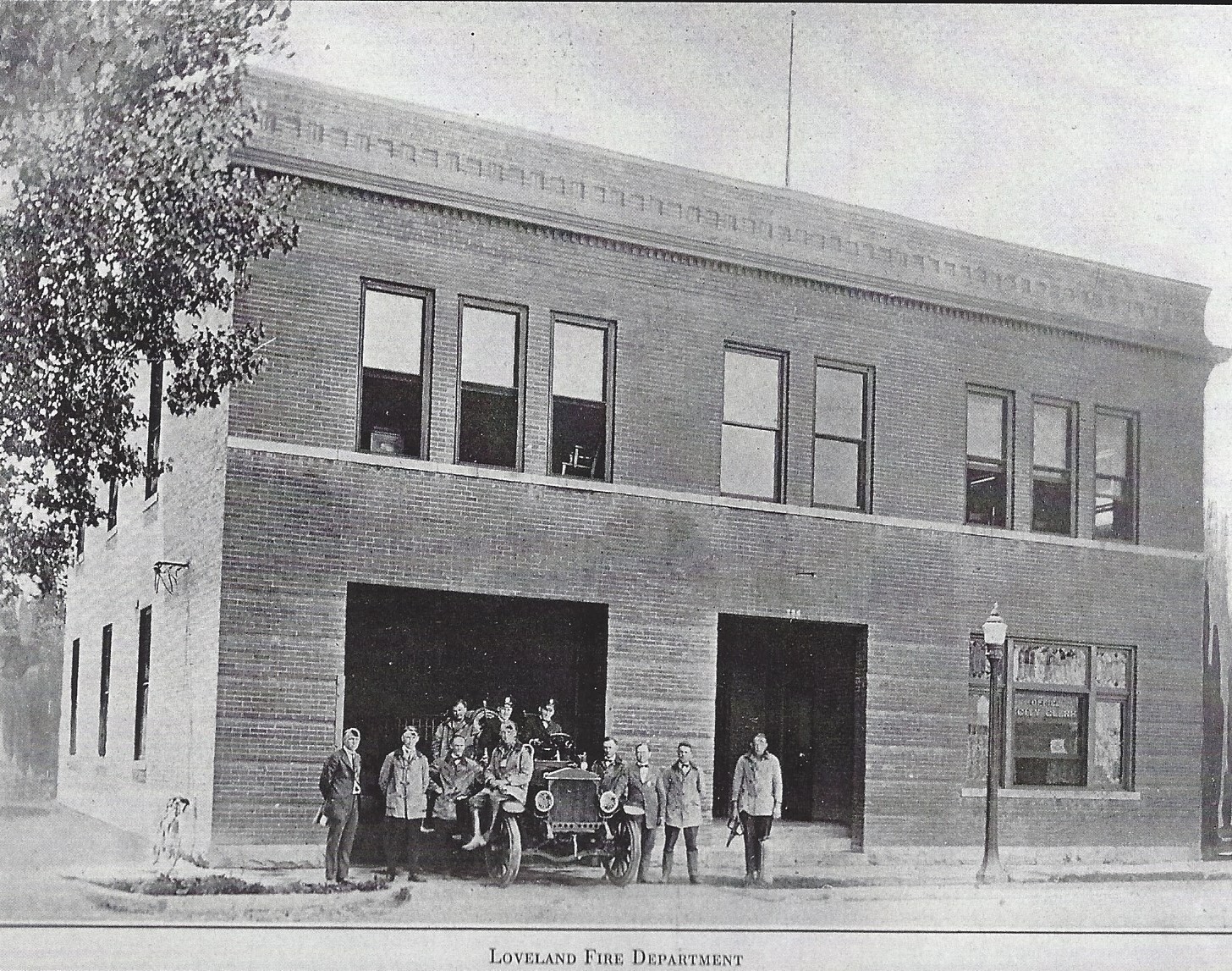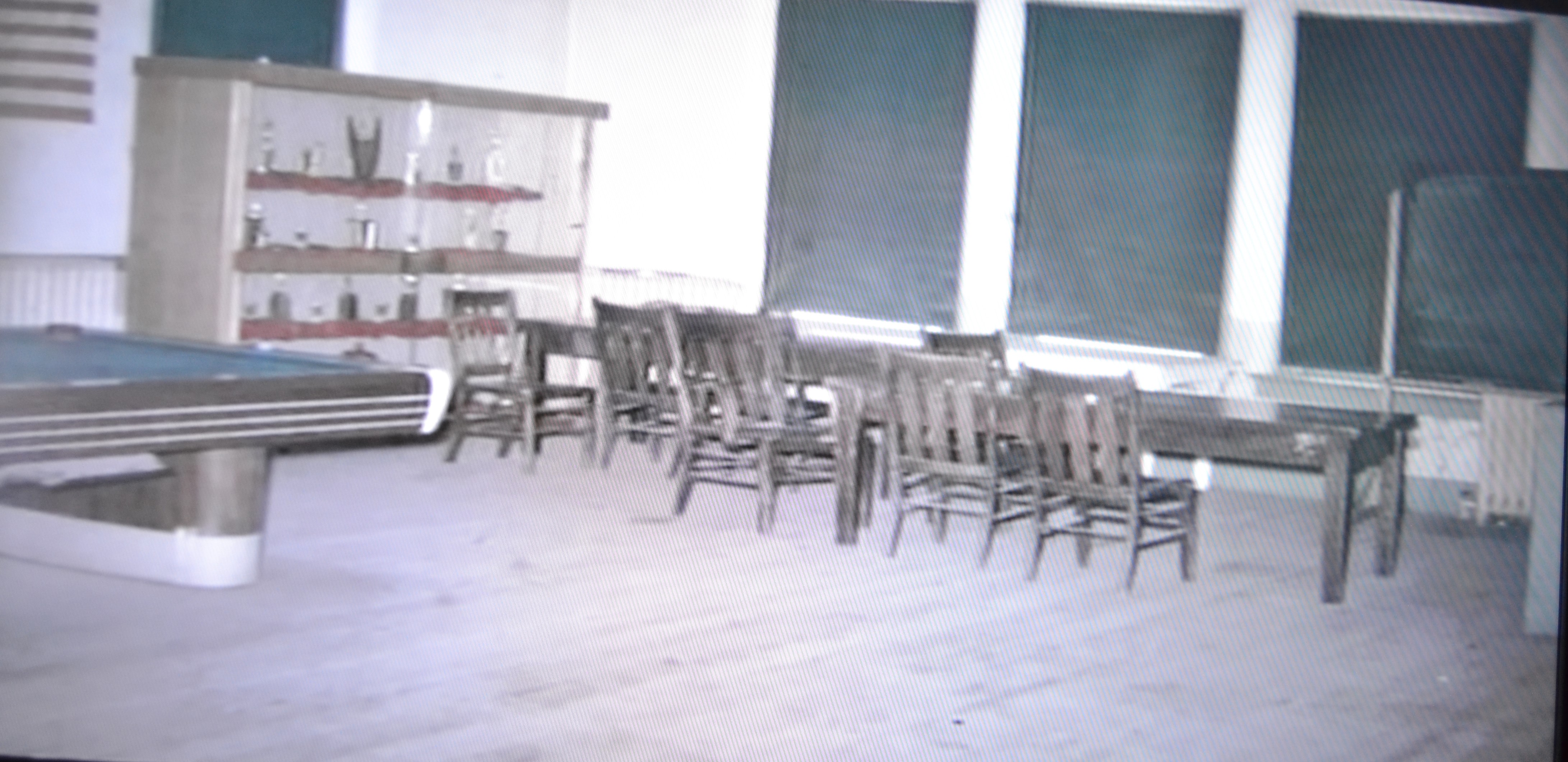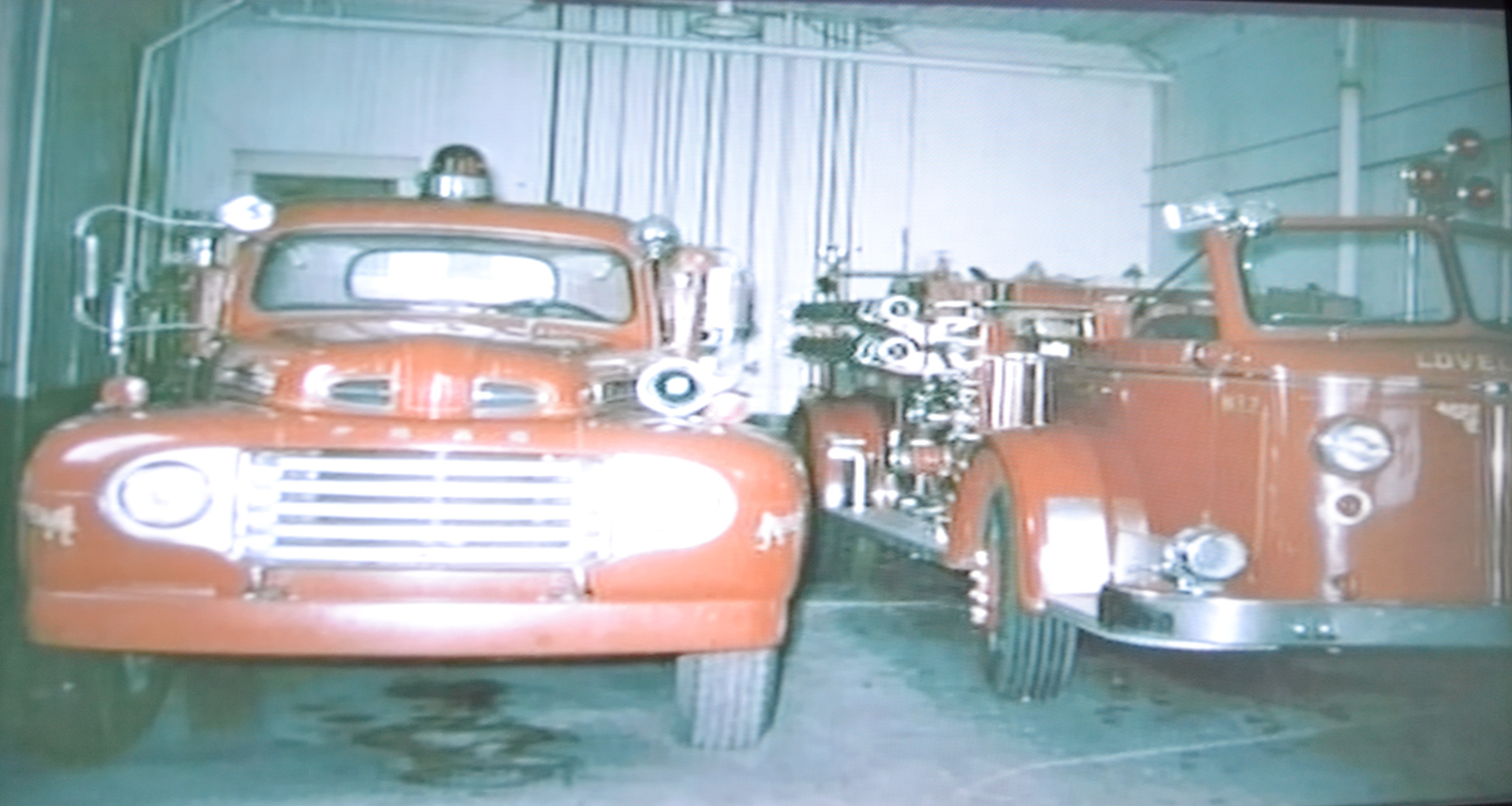Loveland Fire Department has grown from its humble beginnings in the late 1800’s with its small Hose and Ladder companies to what it is today as the Loveland Fire Rescue Authority. From a small barn housing its first Hose Cart to the multiple stations in operation today. many changes have occurred in this process encompassing the growing fleet of apparatus to the expanding need for living quarters as they went from a Volunteer organization to the full time Professional department it is today. Here are our stations from the first to the present and the new one being constructed.

The hose house in the background is believed to be the first fire station housing the Bartholf Hose Company No. 1 and the Loveland Hook and Ladder No. 1. It was located in the 400 Block of B Street (Todays address would be on the west side of Cleveland Ave. between 4th and 5th Streets) Original cost of construction was $989.

In 1909 the city contracted to replace its old Hose House with a new station at a cost of $9,215. They also placed an order for the cities first motorized fire truck to replace the old hand drawn hose cart. The station was a combined fire, police and city administration building. The building was expanded at an unknown date, with the rear of the building incorporating an existing house. The address was changed to 226 at some point in time.

This building was the fire, police, and city administration building. The building has been remodeled a couple of times, with the police and city administration offices moving to new locations. At present the building is occupied by Fire Station 1, LFRA headquarters and the City of Loveland Development Center. (planning, permitting, building)

Loveland’s Station 2 was built in 1974 to meet the need of the growing city growth to the northwest. It was decommissioned in 2014 and sold to Thompson Valley Ambulance as a west station for them.

The new station 2 was built to accommodate a two company station (Engine 2 and Rescue 2) along with additional equipment and housing needs. The move further to the West reflected the addressing of increased response times as the city grew in that direction.

Loveland built Fire Station 3 due to city growth and lessons learned during the Big Thompson Flood of 1976. The need for fire protection south of the Big Thompson River which cut the city in half became very evident. The station is still in operation but there is a great need to upgrade or replace it to accommodate growing needs.

Loveland Fire Station 4 was built to provide fire protection for the Airport and the industrial area east of town. It was manned for a period of time a,d now is unmanned. Crash Rescue equipment is housed at the location and manned as a need basis to accommodate air operations.

Fire Station 4 was opened on the north side of town to accommodate the growing city and increased response times to the area. The station is in service today but need updating and expansion to meet growing needs.

Fire Station 6 was built as Loveland’s first two company station, housing Engine 6 and Tower 6. Currently in service providing protection to the eastern part of the city and I25.


main Fire Station for the Big Thompson Volunteer Fire Department. The first station that they have had that they could have a meeting room, offices , kitchen and dorm area.


The new Fire Station 9 was built to replace the old station at Cedar Springs. The original station was built onland leased from the homeowners association with volunteer labor. The new station encompasses more apparatus storage and equipment.
Currently under construction is Fire Station 7 which is located near Big Thompson Elementary school with projected completion sometime this year in order to accommodate westward expansion of the city. The LFRA continues to grow responsively in an effort to provide the city with the best fire protection they can provide, with more exciting things to come in the near future.
















